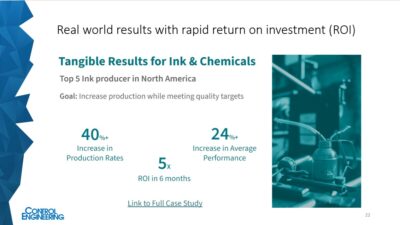With the 2008 Summer Olympics in Beijing approaching and the round-the-clock construction of the modern China regularly trumpeted on news programs, it’s difficult to not believe that China will assume economic predominance in the near term. But the difficulties China faces in making the leap from a low-cost offshore manufacturing center to a global economic entity are building.
With the 2008 Summer Olympics in Beijing approaching and the round-the-clock construction of the modern China regularly trumpeted on news programs, it’s difficult to not believe that China will assume economic predominance in the near term. But the difficulties China faces in making the leap from a low-cost offshore manufacturing center to a global economic entity are building.
As Alan Beaulieu, an economist at the Institute for Trend Research, pointed out at the Control System Integrators Association Executive Conference last month, “I don’t think China will be the number one economy in 10 years, because capitalism is not on firm ground there. And they are not as far along, economically, as many think.”
As an example of the uphill struggle China faces, Beaulieu noted that the per capita GDP of Mexico—with all its own economic issues—is nearly five times greater than that of China.
Beaulieu went on to point out that the U.S. manufactures twice as much as China does. Combined with Canada over the last decade, the U.S. has produced 25% of all the world’s manufacturing. “Production in the U.S. is now at its highest peak since World War II. Furthermore, the United Nations considers us the most competitive nation and views our labor market as the most productive in the world,” he added.
Possibly the biggest issue confronting China’s ascendancy as a competitive global economy is its persistent lack of a sizable and sustainable middle class. Creating that middle class is all about providing decent jobs and pay levels. But achieving that is exactly what could dent the country’s continued growth.
In 2007, management compensation in China increased 9.1%, support staff wages went up 10.3%, as did blue collar wages by 7.6%, according to BusinessWeek in its April 7, 2008 issue. These increases, coupled with an increase in raw materials costs of 7.1%, are leading to plant slow downs and shut downs—similar to what the U.S. has experienced over the past two decades. The Federation of Hong Kong Industries predicts that 10% of factories in Hong Kong’s Pearl River Delta will close in 2008.
Chasing cheap labor around the globe is quickly becoming an increasingly difficult strategy for corporations, especially as costs to transport goods back to Western markets continues its meteoric increase.
We’ll be watching what’s going in China and other global manufacturing centers around the world more closely as we begin incorporating editorial viewpoints from Control Engineering ’s sister publications in Asia, China, Czech Republic/Slovakia, Europe, Poland, and Russia later this year, and monthly in 2009.



